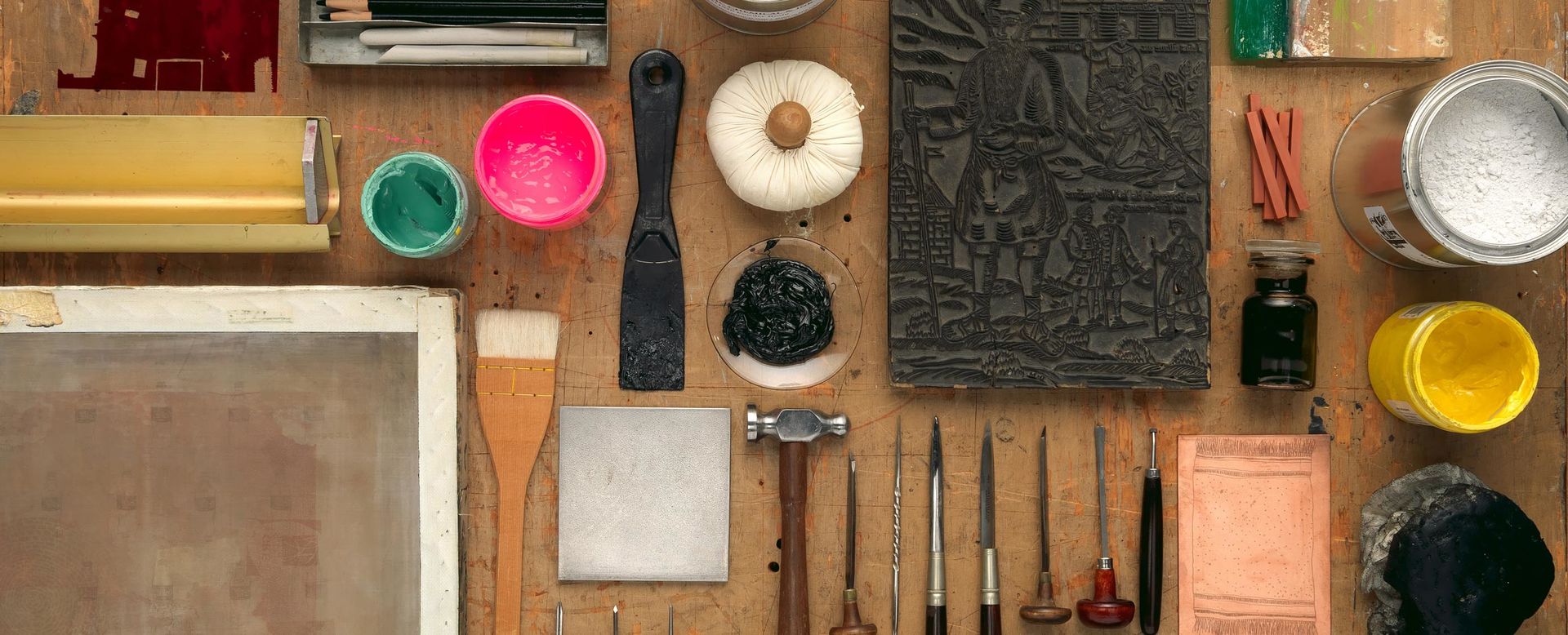
Printmaking is an ancient technique that has captivated artists and art enthusiasts alike for centuries. It is a process that involves creating an image on a surface, such as wood, metal, or stone, and transferring it onto paper or fabric using ink or other mediums. While printmaking may seem like a straightforward method, there are some fascinating facts that you may not know about this art form. In this article, we will explore 10 mind-blowing facts about printmaking that will deepen your appreciation for this unique and intricate process. From its rich history to its diverse techniques and impact on the art world, printmaking continues to be a captivating and dynamic medium. So, prepare to be amazed as we delve into the fascinating world of printmaking!
Key Takeaways:
- Printmaking has been around for centuries, from ancient woodblock printing to the Gutenberg press, showcasing its enduring history and impact on art and knowledge spread.
- Printmaking offers artists a wide range of techniques, allows for multiple reproductions, and continues to evolve in the digital age, making it a versatile and environmentally friendly art form.
Printmaking has been around for centuries.
Take a journey back in time, and you’ll discover that printmaking dates back to ancient times. From woodblock printing in China to the Gutenberg press in Europe, this art form has stood the test of time.
There are various printmaking techniques.
From intaglio and relief printing to lithography and screen printing, printmaking encompasses a wide range of techniques. Each technique offers unique opportunities for artists to express their creativity.
Printmaking allows for multiple reproductions.
Unlike other art forms, printmaking allows artists to create multiple reproductions of their work. This makes prints more accessible to a wider audience and increases the artist’s reach.
The printing press revolutionized printmaking.
In the 15th century, Johannes Gutenberg’s invention of the printing press revolutionized the world of printmaking. It made the production of books and prints faster and more efficient, transforming the spread of knowledge and art.
Printmaking can create intricate and detailed artwork.
Printmaking techniques such as etching and engraving allow artists to create highly detailed and intricate artwork. The precision and skill required to master these techniques are truly awe-inspiring.
Printmaking embraces experimentation.
Printmakers are known for their willingness to experiment with different materials and techniques. This mindset of exploration often leads to innovative and groundbreaking artworks.
Printmaking can be environmentally friendly.
With a focus on using non-toxic materials and water-based inks, printmaking can be a more environmentally friendly art form compared to other traditional mediums. Artists are increasingly conscious of their environmental impact.
Printmaking is a collaborative process.
In printmaking, artists often collaborate with printmakers and printers to bring their visions to life. This collaboration adds an element of teamwork and shared expertise to the creation process.
Printmaking is a versatile art form.
Printmaking can be applied to various mediums, including paper, fabric, ceramics, and even metal. This versatility allows artists to explore new possibilities and create artworks that transcend traditional boundaries.
Printmaking continues to evolve in the digital age.
In today’s digital age, printmaking has embraced new technologies. Artists now incorporate digital processes like digital printing and new media into their printmaking practices, pushing the boundaries of the art form.
These 10 mind-blowing facts about printmaking showcase the rich history, versatility, and enduring nature of this captivating art form. Whether you’re a seasoned printmaker or new to the world of printmaking, exploring the techniques and possibilities it offers is sure to ignite your creativity.
Conclusion
In conclusion, printmaking is a fascinating art form that has a rich history and continues to captivate artists and art enthusiasts around the world. From its origins in ancient civilizations to its modern-day techniques and innovations, printmaking offers a unique and versatile way to create stunning visuals.Through various printmaking methods such as etching, lithography, and screen printing, artists can explore a wide range of expressive possibilities and experiment with different textures, colors, and patterns. The intricate process of printmaking requires patience, precision, and a deep understanding of the medium, resulting in truly mesmerizing artworks.Whether you’re a seasoned artist or simply curious about the art world, delving into the world of printmaking can open up a whole new realm of creativity. So next time you come across a printmaking exhibition or workshop, don’t hesitate to immerse yourself in this captivating art form.
FAQs
1. What is printmaking?
Printmaking is an artistic process that involves creating images or designs on various surfaces, such as paper or fabric, using techniques like etching, engraving, or screen printing. The image is transferred onto the chosen surface using ink, resulting in a unique print.
2. What are the different types of printmaking?
There are several types of printmaking, including etching, lithography, relief printing, and screen printing. Each technique has its own unique characteristics and requires different tools and materials.
3. Can anyone learn printmaking?
Yes, anyone with an interest in art can learn printmaking. While some techniques may require specialized equipment, there are also simpler methods of printmaking that can be done at home with basic materials.
4. Are prints considered original artwork?
Yes, prints are considered original artwork because each print is individually created by the artist. Each print may vary slightly in color or texture, making it a unique piece of art.
5. Is printmaking a popular art form?
Yes, printmaking has gained popularity worldwide due to its versatility and the unique effects it can achieve. Many contemporary artists incorporate printmaking techniques into their art practices, contributing to its growing recognition and appreciation.
6. What is the historical significance of printmaking?
Printmaking has a rich history that dates back to ancient civilizations, playing a significant role in the dissemination of knowledge, culture, and ideas. It allowed for the mass production and distribution of images, books, and other printed materials, shaping the course of human history.
7. Can printmaking be used for commercial purposes?
Yes, printmaking can be used for commercial purposes. It is commonly used in industries such as graphic design, advertising, and packaging, where printed materials are essential for communication and marketing purposes.
8. Are there any famous printmakers?
Yes, there are many famous printmakers throughout history, including Rembrandt van Rijn, Albrecht Dürer, Hiroshi Yoshida, and Mary Cassatt, among others. These artists have made significant contributions to the world of art through their mastery of printmaking techniques.
9. What is the significance of limited edition prints?
Limited edition prints are a way for artists to create a sense of exclusivity and value for their artwork. They are produced in a limited number of copies, each individually numbered and signed by the artist, making them more collectible and desirable.
10. How can I get started with printmaking?
To get started with printmaking, you can take classes at an art school or workshop to learn the techniques and materials needed. You can also find instructional books and online resources that provide step-by-step guidance for beginners.
Printmaking's rich history and diverse techniques offer endless possibilities for artistic expression. From the intricacies of Albrecht Dürer's woodcuts to the emotive power of Edvard Munch's lithographs, printmakers have left an indelible mark on art history. As you explore the world of printmaking, consider celebrating Print Day in May, an annual event that showcases the vitality of this enduring art form. Whether you're a seasoned artist or a curious beginner, printmaking invites you to experiment, collaborate, and create works that inspire and engage.
Was this page helpful?
Our commitment to delivering trustworthy and engaging content is at the heart of what we do. Each fact on our site is contributed by real users like you, bringing a wealth of diverse insights and information. To ensure the highest standards of accuracy and reliability, our dedicated editors meticulously review each submission. This process guarantees that the facts we share are not only fascinating but also credible. Trust in our commitment to quality and authenticity as you explore and learn with us.


